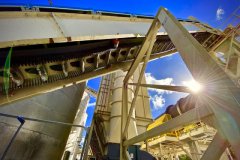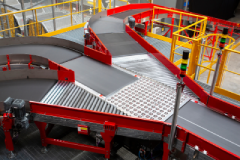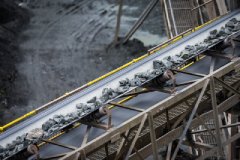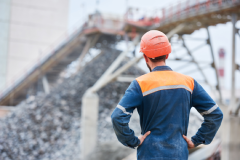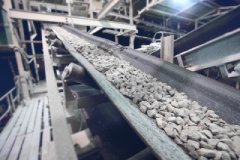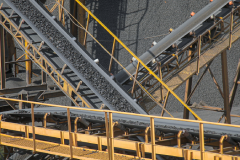Product Spotlight
conveyor elevator buckets
A conveyor bucket elevator, also known as a bucket elevator or grain leg, is a mechanism designed to transport materials vertically or at steep inclines by holding them in a series of buckets attached to a belt, chain, or cable. These buckets carry the materials from the lower endpoint (the boot) to the upper endpoint (the head), where they are discharged into a chute or drum. The system is especially useful in transporting bulk materials, such as in the agricultural, mining, and manufacturing sectors, for its efficiency in handling large capacities and its ability to lift materials over significant vertical distances.
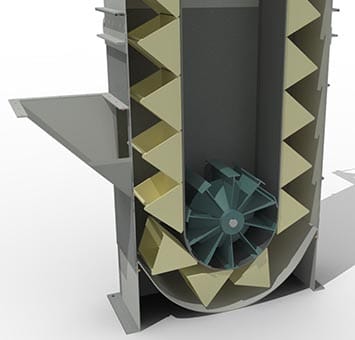
Benefits of Bucket elevator
Space Efficiency
Enhanced Productivity
Reduced Material Damage
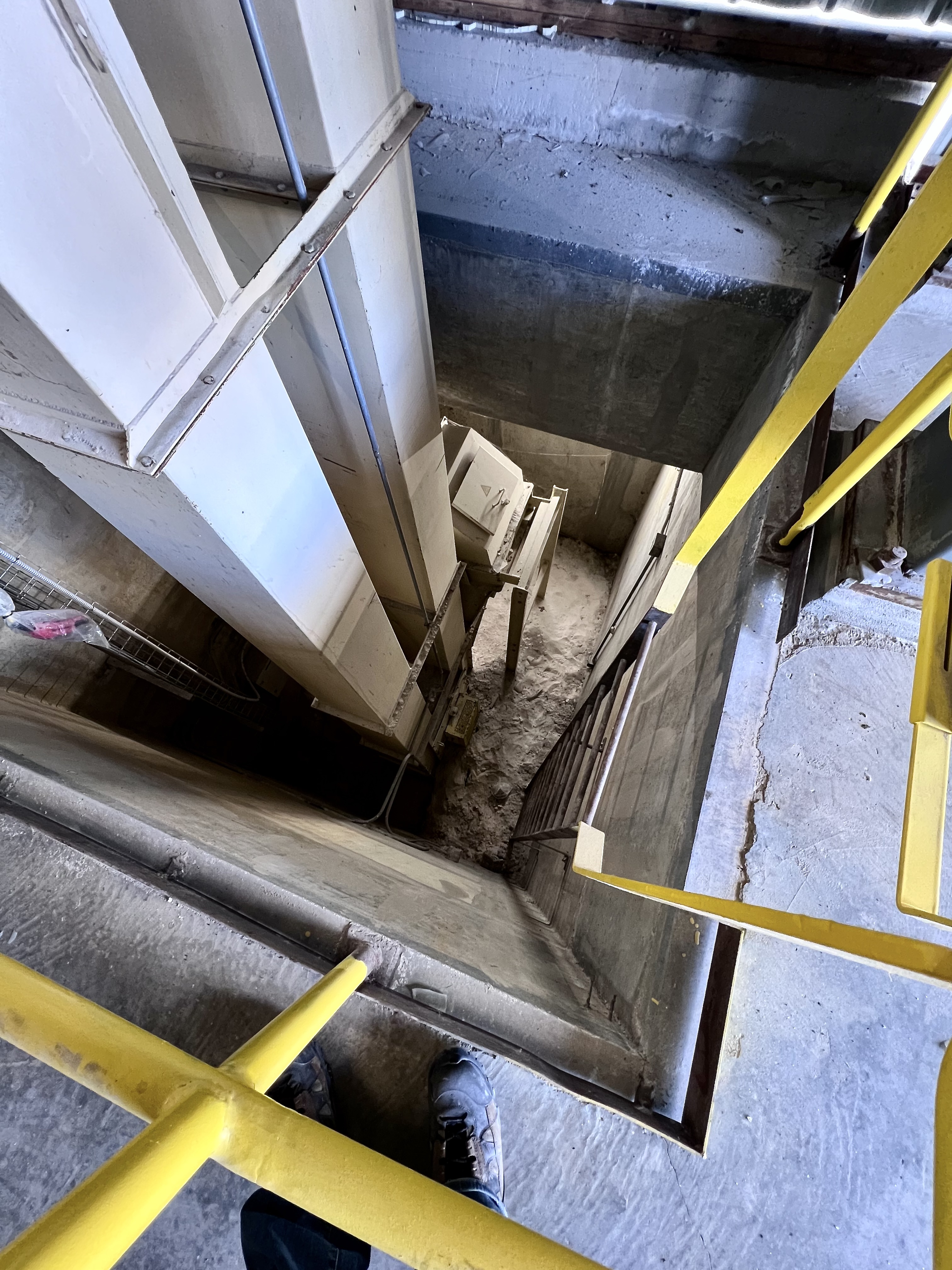
Top 3 Reasons to Have bucket elevator Installed:
-
High Capacity and Versatility: Bucket elevators are capable of handling large capacities of varied materials, from light, fine particles to heavy, large lumps. They can be customized to the specific needs of the customer, making them suitable for a wide range of industries.
-
Low Maintenance and Durability: These systems are designed for durability and require minimal maintenance. Their simple design and robust construction mean they have fewer breakdowns, resulting in lower downtime and maintenance costs.
-
Safety and Cleanliness: The enclosed design of bucket elevators not only ensures the safe transport of materials but also contributes to a cleaner environment by containing dust and preventing contamination, which is crucial for maintaining quality in industries such as food processing and chemicals.
In summary, bucket elevators are a highly efficient, space-saving, and gentle material handling solution that can benefit customers by enhancing productivity, reducing maintenance, and improving safety and cleanliness in operations.
Types of Conveyor elevator buckets:
Bucket elevators can be outfitted with various types of buckets, each designed to suit particular materials and applications. Here's a list of different bucket types and their benefit
- Centrifugal Discharge Buckets:- Benefits: These are designed for rapid, high-speed handling of granular or small-sized materials. The high-speed discharge allows for effective material ejection, making them ideal for applications requiring high capacity.
- Continuous Discharge Buckets:- Benefits: These buckets provide a smoother and more continuous material flow. They're often used for gentle handling of abrasive or fragile materials to minimize product damage.
- Positive Discharge Buckets:- Benefits: These buckets are best suited for sticky or challenging materials. The bucket's design ensures a complete discharge of the materials, reducing clogging and allowing for more precise handling.
- Low Profile Buckets:- Benefits: They are designed for close spacing on the belt, which allows for maximum filling and discharge, making them effective for light, fluffy materials or products with large lumps.
- Vented Buckets:- Benefits: Vents allow air to escape when materials are loaded into the bucket, which helps in filling and prevents the "cavitation" effect, particularly useful when handling light, powdery materials.
- Stacking Buckets:- Benefits: These can be stacked on top of one another for efficient shipping and storage. They are typically used in situations where space-saving during transport is a priority.
- High Impact Buckets:- Benefits: Made from durable materials designed to withstand high impact forces, these buckets are suited for heavy and harsh materials, ensuring a longer service life.
- Fabricated Steel Buckets:- Benefits: These buckets offer customizability for specific needs, with options for different steel grades and hardened wear surfaces for increased durability against abrasive materials.
Each bucket type provides unique benefits that can optimize the performance of a bucket elevator system, improve material handling efficiency, and address specific challenges posed by different materials. Choosing the right bucket type is critical to maximizing productivity and extending the longevity of the bucket elevator.







Past Spotlights
Belt Cleaners
BELT CLEANERS
Conveyor belt cleaners play a pivotal role in maintaining the efficiency and longevity of conveyor systems. They are designed to remove residual material from the belt, which is crucial for several reasons. It helps to minimize the need for maintenance, reduces material loss, and can extend the life of the belt by preventing damage from trapped materials.
BENEFITS OF CONVEYOR BELT CLEANERS
Increased Operational Efficiency
By removing debris and materials that may adhere to the belt, cleaners ensure that the conveyor system runs smoothly. This prevents unnecessary downtimes caused by material buildup that can affect the belt's movement and the conveyor's overall performance.
Extended Belt Life
Material buildup on the belt can cause premature wear and tear, leading to costly replacements. Cleaners extend the lifespan of conveyor belts by preventing rough materials from grinding against the belt surface and edges, thereby saving money in the long run.
Improved Workplace Safety
Accumulated debris can pose significant safety risks, including slip and fall hazards and the potential for material to get caught in the conveyor machinery. Cleaners help minimize these risks, creating a safer work environment for all.
TOP 3 REASONS TO HAVE CONVEYOR BELT CLEANERS INSTALLED:
- Cost Savings: The primary reason to invest in conveyor belt cleaners is the significant cost savings. By reducing the wear on the belt and preventing damage to other conveyor components, businesses can save on maintenance and replacement costs. Additionally, efficient cleaners minimize downtime, ensuring that operations continue without costly interruptions.
- Enhanced Productivity: A clean conveyor belt is essential for maintaining the flow of operations. Cleaners ensure that materials are transported effectively without spillage or sticking, which can lead to blockages or the need for manual cleaning. This consistent operation enhances productivity and ensures that deadlines are met without delay.
- Compliance and Environmental Responsibility: Many industries are subject to strict environmental regulations regarding dust and material spillage. Conveyor belt cleaners help companies comply with these regulations by reducing material loss and preventing spillage into the environment. This not only aids in compliance but also promotes a company's commitment to environmental responsibility.
In summary, conveyor belt cleaners are an essential component for any business that relies on conveyor systems for material handling. They offer a trifecta of benefits: cost savings, enhanced productivity, and compliance with environmental standards, making them a wise investment for operational success.
TYPES OF CONVEYOR BELT CLEANERS:
Understanding the different types of conveyor belt cleaners is crucial for optimizing the performance and longevity of a conveyor system. Here are the definitions for primary, secondary, and tertiary conveyor belt cleaners:
- Primary Conveyor Belt Cleaners
Primary conveyor belt cleaners are installed on the conveyor head pulley's face or immediately downstream. Their main function is to remove the majority of material adhering to the belt surface immediately after the bulk material discharge point. By doing so, they play a crucial role in preventing material carryback, which can accumulate under the conveyor and cause operational problems. Primary cleaners typically feature a single blade and are the first line of defense against material build-up on the belt.
- Secondary Conveyor Belt Cleaners
Secondary conveyor belt cleaners are located immediately after the primary cleaners and are designed to remove fine particles and materials that the primary cleaners did not capture. They often feature multiple blades or brushes and target the finer residues left on the belt, further reducing carryback and improving conveyor efficiency. Secondary cleaners are essential for maintaining cleanliness and efficiency, especially in applications where material carryback is a significant concern.
- Tertiary Conveyor Belt Cleaners
Tertiary conveyor belt cleaners are installed further down the conveyor line, typically after the secondary cleaners or at points where additional cleaning is necessary to ensure the belt is as clean as possible before it returns to the loading point. Tertiary cleaners are used in applications requiring extremely high levels of cleanliness and minimal material carryback. They may include specialized cleaners like brush cleaners or air knives, which provide a final touch-up to remove any remaining dust or particles.
Each type of conveyor belt cleaner plays a specific role in the material handling process, contributing to the overall efficiency, safety, and longevity of the conveyor system. Selecting the appropriate type and combination of cleaners depends on the nature of the material being conveyed, the conveyor design, and the operational requirements of the system.
Gearboxes
A conveyor gearbox is a crucial component of any conveyor system. It's essentially the heart of the system, responsible for transmitting power from the motor to the belt or chain, ultimately making the conveyor move.
SELECTING THE RIGHT GEARBOX DEPENDS ON SEVERAL FACTORS
- Conveyor type and capacity: Different conveyor types (belt, chain, roller) and capacities require different gearboxes with varying torque and speed capabilities.
- Motor specifications: The gearbox must be compatible with the motor's power output and speed.
- Application requirements: Consider factors like operating environment, duty cycle, and material being conveyed.
By understanding the functions and types of conveyor gearboxes, you can make informed decisions when choosing the right one for your specific needs. This ensures optimal performance, efficiency, and longevity of your conveyor system.
